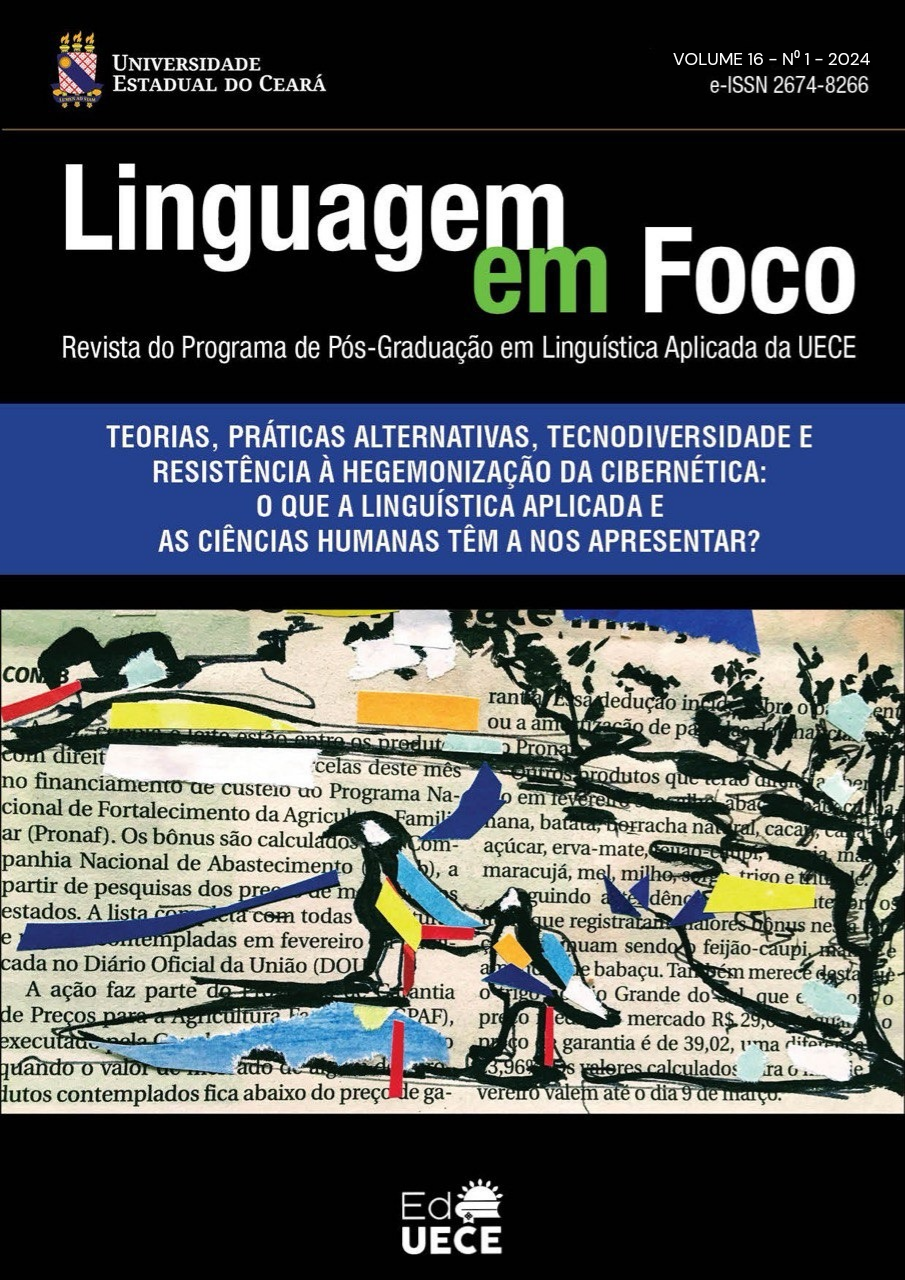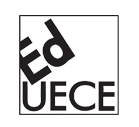Monetized Face
a review of the face concept in the context of social networks
DOI:
https://doi.org/10.46230/2674-8266-15-12108Keywords:
face, positivity, social networkAbstract
The concept of "face" has gained significant prominence in sociological and linguistic studies, especially in the field of pragmatics and interactional sociolinguistics. Originating in the sixties, while remaining consistent with the present day, the concept doesn't encompass the characteristics of interactions in postmodernity. Therefore, this essay aims to update the concept of "face" by linking it to studies of politeness and positivity in the performance of the "self" in social media interactions. To achieve this, a bibliographic review was conducted, encompassing works by Goffman (1963a;1963b;1967; 1975), Brown and Levinson (1987), Bourdieu (2010), Brinkmann (2022), Cabanas and Illouz (2022), Han (2019), Ortega & Gasset (1962), Barros (2011), Recuero (2009), Strömquist (2023), among others. Considering the context of late capitalism and the intensification of social interactions through internet social networks, I argue that "face" is monetized, fundamentally being rendered positive through an inherent fluidity that varies according to the context and interactional niche.
Downloads
References
ADORNO, T. W. A Indústria Cultural. In: COHN, G. Comunicação e indústria cultural. São Paulo: Nacional; Editora da Universidade de São Paulo, 1971.
AUSTIN, J. L. Quando dizer é fazer: palavras e ação. Porto Alegre: Artes Médicas, 1990.
ANDERSON, M. E-mpoliteness: creative impoliteness as an expression of digital social capital. Journal of Politeness Research. 2023. Disponível em https://www.degruyter.com/document/doi/10.1515/pr-2022-0009/html. Acesso em: 09 fev, 2024.
BARROS, D. L. P, de. (Org.). Preconceito e intolerância: reflexões lingüístico discursivas. São Paulo: Universidade Presbiteriana Mackenzie, 2011.
BELL, A. Language style as audience design. Language in Society, New Zeland, v.13, n. 2, p.145-204, jun. 1984.
BOURDIEU, P. O poder simbólico. Rio de Janeiro: Bertrand Brasil, 2010.
BRINKMANN, S. Positividade tóxica. Rio de Janeiro: Best Seller, 2022.
BROWN, P.; LEVINSON, S. Politeness: some universals in language usage. Cambrige: University Press, 1987.
BUTLER, J. Discurso de ódio: uma política do performativo. São Paulo: Editora Unesp, 2021.
CABANAS, E.; ILLOUZ, E. Happycracia: fabricando cidadãos felizes. São Paulo: Ubu editora, 2022.
CAILLOIS, R. Os jogos e os homens: a máscara e a vertigem. Lisboa: Cotovia, 2001.
CRARY, J. 24/7: Capitalismo tardio e os fins do sono. São Paulo: Ubu Editora, 2016.
ECKERT, P. Language Variation as social Practice. Oxford: Blackwell, 2000.
ELLIS, A. Psychotherapy techniques for use with psychotics. American Journal of Psychotherapy. v. 9, n. 3, p. 452-476, 1955. Disponível em: https://psychotherapy.psychiatryonline.org/doi/abs/10.1176/appi.psychotherapy.1955.9.3.452?journalCode=apt. Acesso em: 23 ago, 2023.
GIRARD, R. Anorexia e desejo mimético. São Paulo: É realizações, 2011.
GOFFMAN, E. Behavior in public places: notes on the social organization of gatherings. New York: Free Press, 1963a.
GOFFMAN, E. Estigma: notas sobre a manipulação da identidade deteriorada. Nova Jersey: Prentice-Hall, 1963b.
GOFFMAN, E. Interaction ritual: essays on face-to-face behavior. Garden City: Anchor Doubleday, 1967.
GOFFMAN, E. A representação do Eu na vida cotidiana. Petrópolis: Vozes, 1975.
GOFFMAN, E. Forms of talk. Pennsylvania: University of Pennsylvania Press, 1981.
HAN, B. C. A salvação do belo. Petrópolis: Vozes, 2019.
MEAD, G. H. The social self. Journal of Philosophy, Psychology and Scientific Methods, v. 10, n. 14, p. 374–80, 1913. Disponível em: https://www.jstor.org/stable/2012910. Acesso em: 09 fev, 2024.
ORTEGA Y.; GASSET, J. A rebelião das massas. Rio de Janeiro: Livro Ibero-americano, 1962.
PAIVA, G. M. F. e. A influência da terceira parte na mudança de footing em chats educacionais. 2013. 304f. – Tese (Doutorado em Linguística) – Universidade Federal do Ceará, Departamento de Letras Vernáculas, Programa de Pós-graduação em Linguística, Fortaleza (CE), 2013. Disponível em: https://repositorio.ufc.br/handle/riufc/8244 Acesso em: 27 de agosto de 2023.
RECUERO, R. Diga-me com quem falas e dir-te-ei quem és: a conversação mediada pelo computador e as redes sociais na internet. Revista FAMECOS, [S. l.], v. 16, n. 38, p. 118–128, 2009. DOI: 10.15448/1980-3729.2009.38.5309. Disponível em: https://revistaseletronicas.pucrs.br/ojs/index.php/revistafamecos/article/view/5309. Acesso em: 23 ago. 2023.
ROJEK, C. Celebridade. Rio de Janeiro: Rocco, 2008.
RIBEIRO, B. T.; GARCEZ, P. M. (orgs.). Sociolingüística Interacional: antropologia, lingüística e sociologia em análise do discurso. Porto Alegre: AGE, 1998.
SANTAELLA, L. Linguagens líquidas na era da mobilidade. São Paulo: Paulus, 2007.
SIBILIA, P. O show do eu: a intimidade como espetáculo. Rio de Janeiro: Nova Fronteira, 2016.
STRÖMQUIST, L. Na sala dos espelhos. São Paulo: Quadrinhos na Cia, 2023.
Downloads
Published
How to Cite
Issue
Section
License
Copyright (c) 2024 Geórgia Maria Feitosa e Paiva

This work is licensed under a Creative Commons Attribution 4.0 International License.
Authors who publish in Linguagem em Foco Scientific Journal agree to the following terms:
- Authors retain the copyright and grant the journal the right of first publication. The articles are simultaneously licensed under the Creative Commons Attribution License which allows sharing the work with an acknowledgement of its authorship and initial publication in this journal.
- The concepts issued in signed articles are the absolute and exclusive responsibility of their authors. Therefore, we request a Statement of Copyright, which must be submitted with the manuscript as a Supplementary Document.
- Authors are authorized to make the version of the text published in Linguagem em Foco Scientific Journal available in institutional repositories or other academic work distribution platforms (ex. ResearchGate, Academia.edu).





























